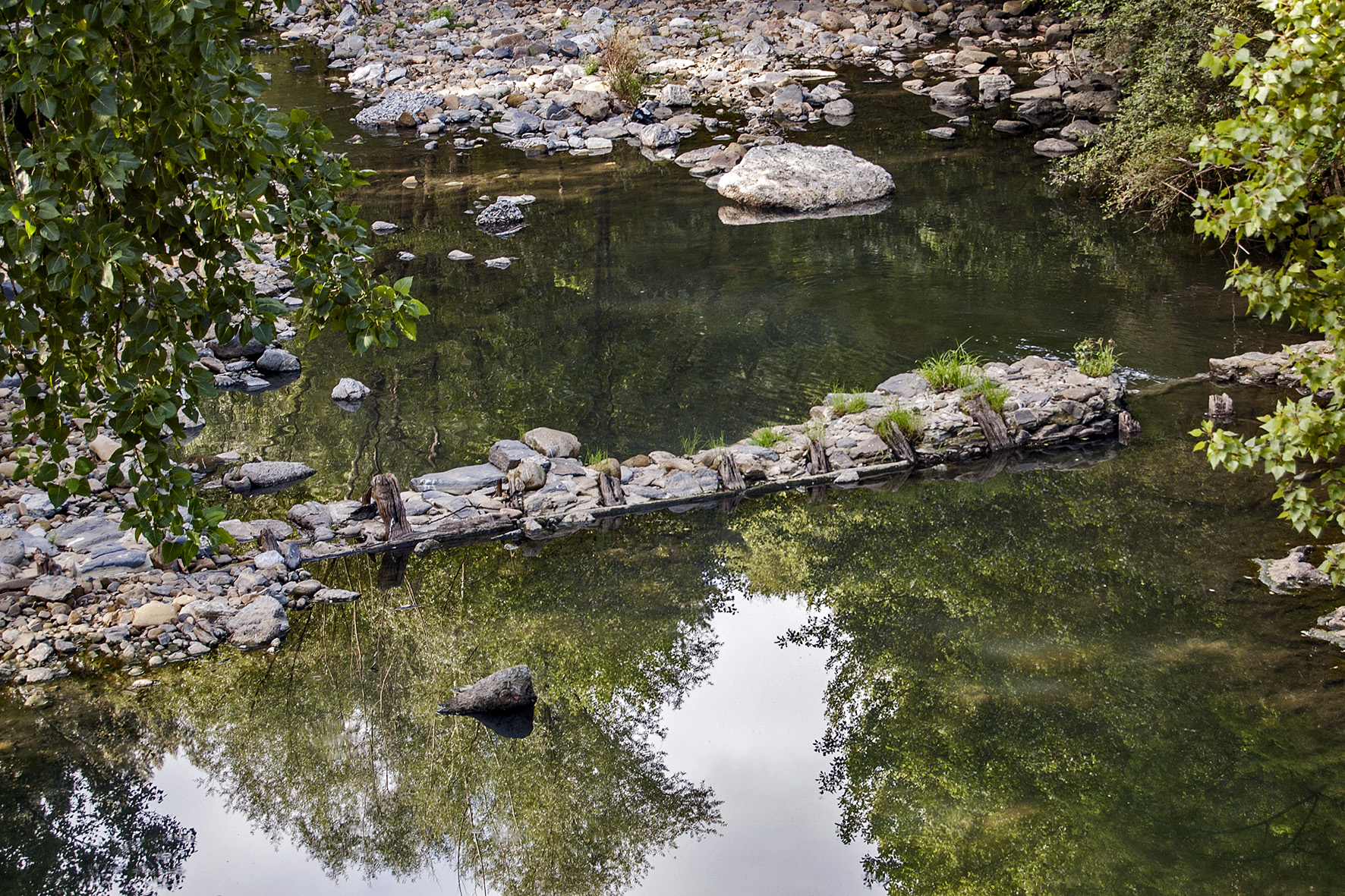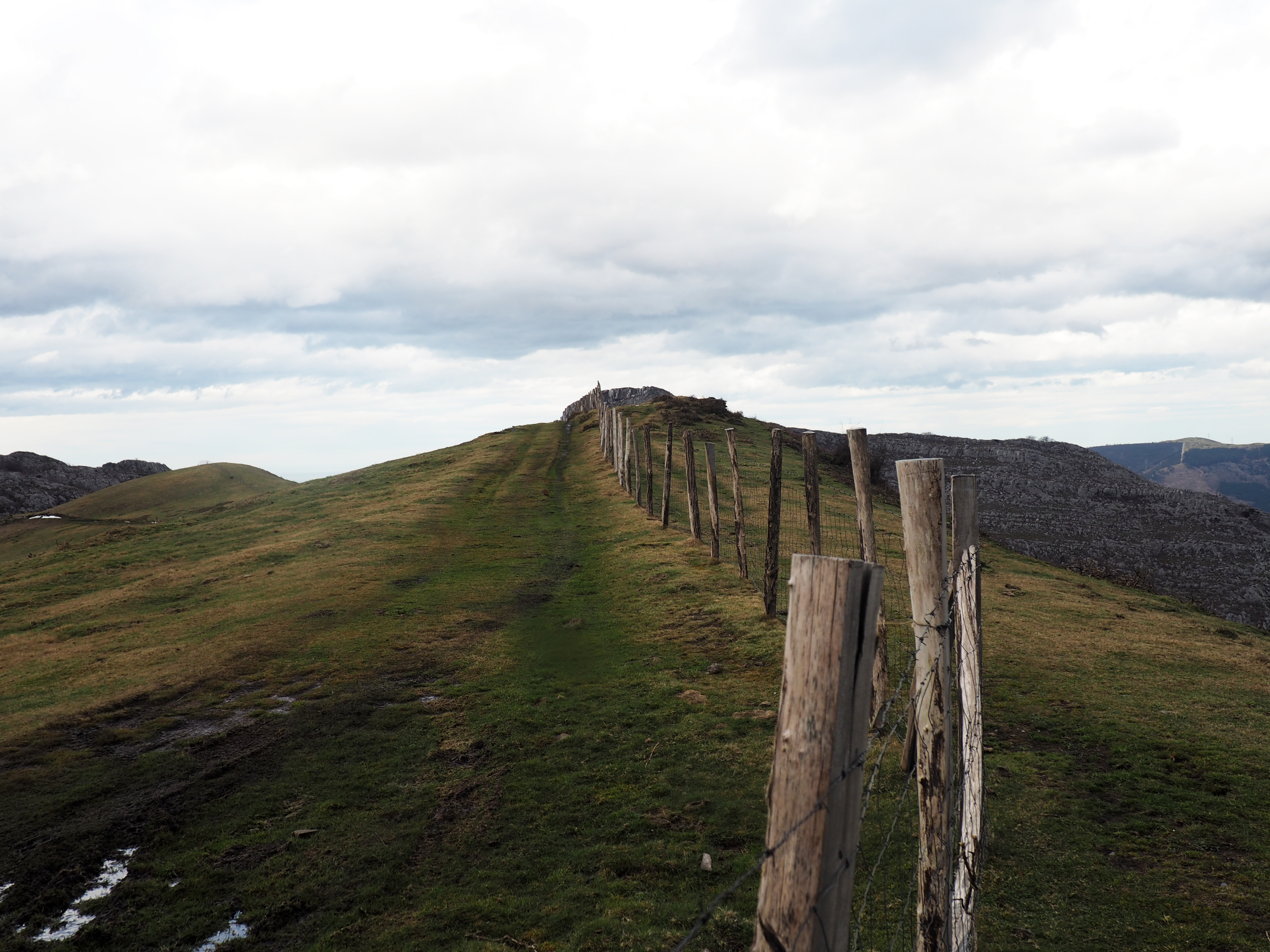Basque ethnography at a glance

Vestiges of the dam at Vicario Mill in the neighbourhood of Molinar, 1978. Miguel Sabino Díaz.
Heavy rainfall caused a great deal of destruction in the Valley of Carranza (Bizkaia) back in 1978 and revealed the remains of ancient timber dams, which allowed to know in situ the technique used in the construction of these old-time hydraulic structures of clear medieval origin.
Well into the 19th century the majority of the watermills in the Valley employed small, straight single-walled dams to provide power to the water-raising machinery. (more…)

Wire fence in the mountain, 2018. Sergio Fernández Olazabal.
Those born in border areas surrounded by mountains and devoted to activities developed in these spaces, such as the breeding of Monchino cows and mares or sheep farming, have a very different vision of borders to that of government officials and politicians who show no more than lawful respect for them. (more…)
![Boda de hidalgos en Begoña [Noble wedding in Begoña] by Francisco Vázquez de Mendieta, 1607](https://www.labayru.eus/wp-content/uploads/2018/03/bodadehidalgosenbegoc3b1a.jpg)
Boda de hidalgos en Begoña [Noble wedding in Begoña] by Francisco Vázquez de Mendieta, 1607.
Women’s hairdo and headwear are, to put it briefly, simple fashion statements to complement their clothing in the modern western world today; however, by no means was it always so. In ancient times the way women styled their hair and covered their head was distinctive of their social and civil status, and what is more, of the role they held and the consideration they received from a strongly hierarchical society. Within the rigid, stratified society, and subsequently in the traditional world until late into the 19th century, headdresses were worn by women to reflect their civil status. (more…)

Flock of sheep grazing in Mount Oiz (Bizkaia), 2002. José Ignacio García Muñoz. Labayru Fundazioa Photographic Archive.
It being such a rainy winter in our country, I have been reminded of a legend retold by shepherds in the course of fieldwork conducted in localities bordering Mount Oiz in 1997. Neither too much rain nor too much sun are indeed known to be beneficial to pastures and soils. (more…)

